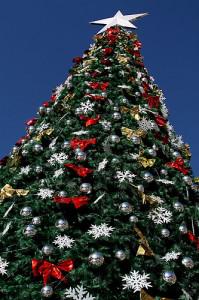
The question of real versus fake Christmas trees is one that is hotly debated each holiday season. However, most of the tree huggers and environmentalists are convinced that real trees are easily the best choice, both from a public health and a personal standpoint. Those on the other side of the argument contend that fake trees are better because they can be reused year after year, and therefore don’t create the waste that real trees do. That is countered by the fact that most fake trees are constructed using PVC (vinyl), or polyvinyl chloride, which is a highly offensive petroleum-derived and nonrenewable type of plastic.
Let’s take a look at further reasons why a real tree is the best choice, even though it will end up out by the garage door in a few weeks:
The Drawbacks of Fake Trees
Several carcinogens are emitted during the production of PVC, such as vinyl chloride, ethylene dichloride, and dioxin. These can pollute areas that are nearby to the manufacturing sites. Furthermore, most of these sites are located inChina, where 85 percent of our fake trees come from. Sadly, the labor standards over there are not protecting workers well enough from the dangerous chemicals.
Fake trees also contain lead and additives that are used to make the rigid PVC malleable. Unfortunately, some of the additives are linked to neurological, kidney, reproductive system, and liver damage in lab animals. The Children’s Health Environmental Coalition (CHEC) believes that fake trees shed dust that is laced with lead and this ends up coating the branches, floor, and any gifts that are under the tree.
Why Buy a Real Tree
The ultimate environmentally friendly tree is one that you purchase with the roots intact and then plant in your yard after the holidays. However, because pine trees are typically dormant throughout the winter, if a live tree spends more than seven days in the warmth of your home, it can begin to grow again. Once that happens, the chances of the tree surviving its replanting are slim to none. If you are choosing a live tree, do so as close to the holidays as possible, and then replant it immediately.
The Downside of a Real Tree
The major downside to a real Christmas tree is the fact that it is farmed as an agricultural product, and therefore requires the application of pesticides during its lifespan, which is typically eight years. Therefore, they contribute to pollution while they grow, and once again can pollute local watersheds when they are tossed out. Beyond this runoff concern, the number of trees that are tossed out each year is a burden on our municipalities that are not equipped to compost them.
Join in the discussion in the comments below and/or share the piece.
Photo credit: 


